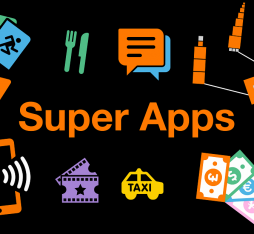“The Open Source-type cooperation model is without doubt the most appropriate way of creating new business models and services where each contributor is rewarded on the basis of their efforts.”
“Linux and Open Source have won, get over it”. That was the title of an article published in early 2016 on ZDNet, which sounded like a death knell and reflected a kind of inevitability. But the sentence is no less true for all that, and is becoming more evident with every passing year. At a strictly business level, the turnover of Open Source agents is growing six times faster than the digital sector in France as a whole according to a 2016 study by the French National Council for Free Software. But its influence goes way beyond financial issues alone…
Open Source?
A program is deemed to be Open Source when its development and use comply with certain principles laid down by the Open Source Initiative (OSI), such as free distribution and access to the source code. By doing this, a developer or community of developers behind a software solution can share it with their peers to improve, enrich and perfect it. On the other hand, users of “proprietary” software are unable to study its source code and modify it.
From being a marginal phenomenon in the early noughties, Open Source has today become mainstream, up to and including the recent involvement of proprietary software giant Microsoft, which has teamed up with the Linux Foundation, set up in 2007 to oversee the development of the eponymous free operating system.
The race for Open Source had begun, and Orange has already been involved for a number of years by recommending the use of a selection of open source components and tools, setting up a Group governance body, and practising the sharing of code in its in-house software forges.
Open source, Open Innovation: self-evident openness at Orange
Open Source culture is deeply rooted in the Group’s mindset, and is essential to the life of its products and services. As an example, our Livebox routers feature built-in Open source components whose codes are published and stored on open access on a dedicated website.
The approach is pragmatic and consistent with the open, collaborative innovation policy operated by Orange. “When innovation takes place in an open framework it generates efficiencies, and Open Source is a reference framework that allows people from different firms and “technical” cultures to cooperate,” explains Thierry Souche, CIO, Orange Labs Services. “By contributing to an Open Source community, and by nurturing it with our feedback, we automatically benefit from improvements made by others. Through our membership, for example, of the OpenStack Foundation, which oversees the development of the eponymous cloud computing platform, we can envisage deploying datacenters with a single click in the near future.”
The “co-opetition” era
In the world of telecommunications, Open Source has dealt a new hand in a well-established game by bringing operators and hardware suppliers together. Competitors start to co-operate, bringing together a host of players including the likes of AT&T, IBM and Dell. Recently, AT&T decided to transition its SDN/NFV automation and virtualisation platform for functions in its ECOMP network architecture to Open Source in conjunction with Orange, in the framework of the Open Network Automation Platform (ONAP).
Thierry Souche reckons that this trend towards co-opetition can only strengthen. “The Open Source-type cooperation model is without doubt the most appropriate way of creating new business models and ensuring fair compensation for the efforts everyone puts in,” he explains. “At a time when budgets are tight, we need to continue working on the efficiency of our technical resources and configurations, and co-opetition is a strategic driver when it comes to rising to this challenge, which is where all innovative software players are heading.”
Quality a major driver
Through its mechanism, Open Source is shifting resolutely towards considerations of quality and efficiency. If a firm contributes, financially and technically, to an Open Source development project, it follows that it sees the prospects of profiting by it.
“Open Source innovation injects flexibility into our organization and speeds implementation lead times,” adds Thierry Souche. “That’s because the world of Open Source encourages greater interpenetration of technologies than in the commercial sphere. It helps to bring forward new solutions and offer them to customers faster and more efficiently. And what’s more, those solutions are based on fine-tuned software building blocks that are reliable, secure, and proven by hordes of players all over the world.”
Being so advantageous for eco-systems, companies and end customers, can anyone doubt the benefits of Open Source?











